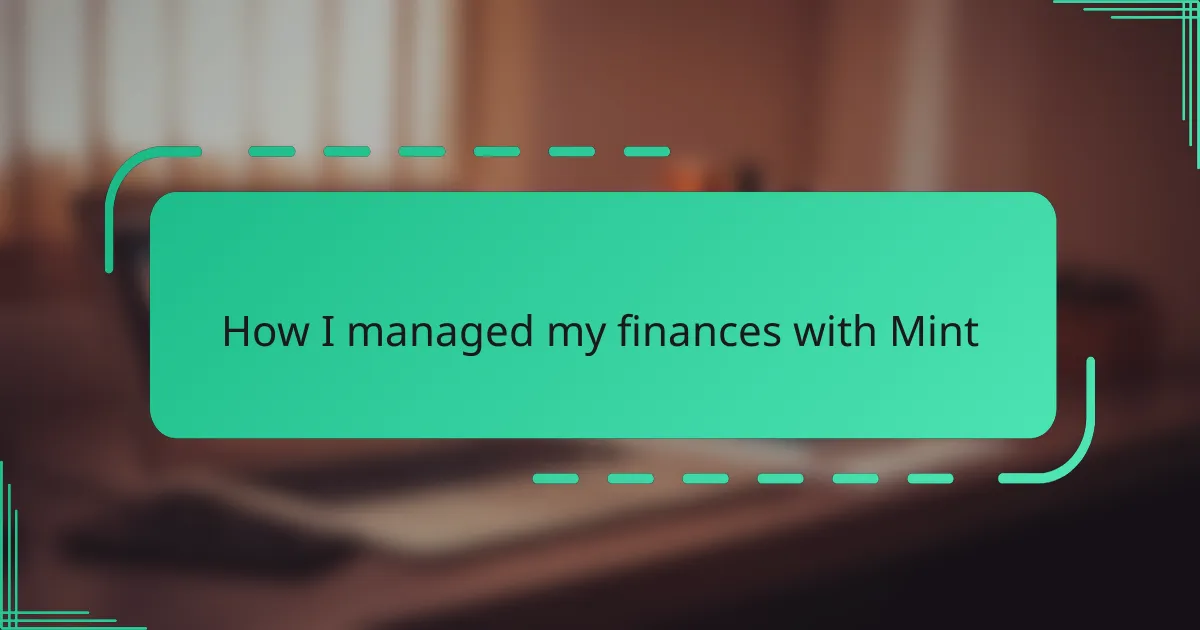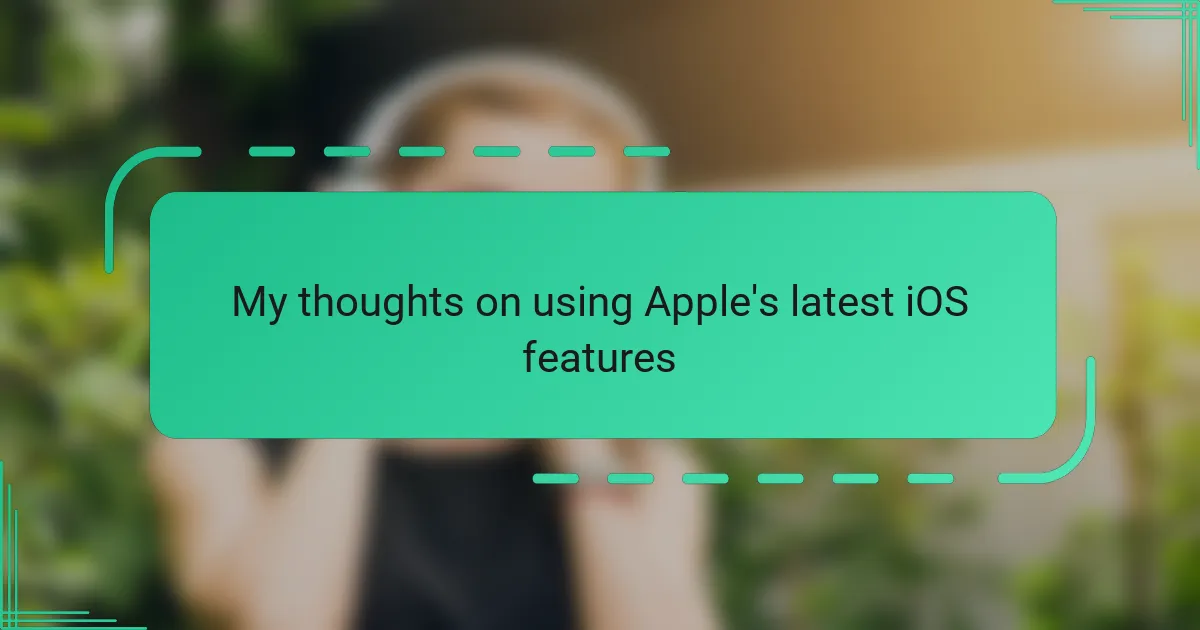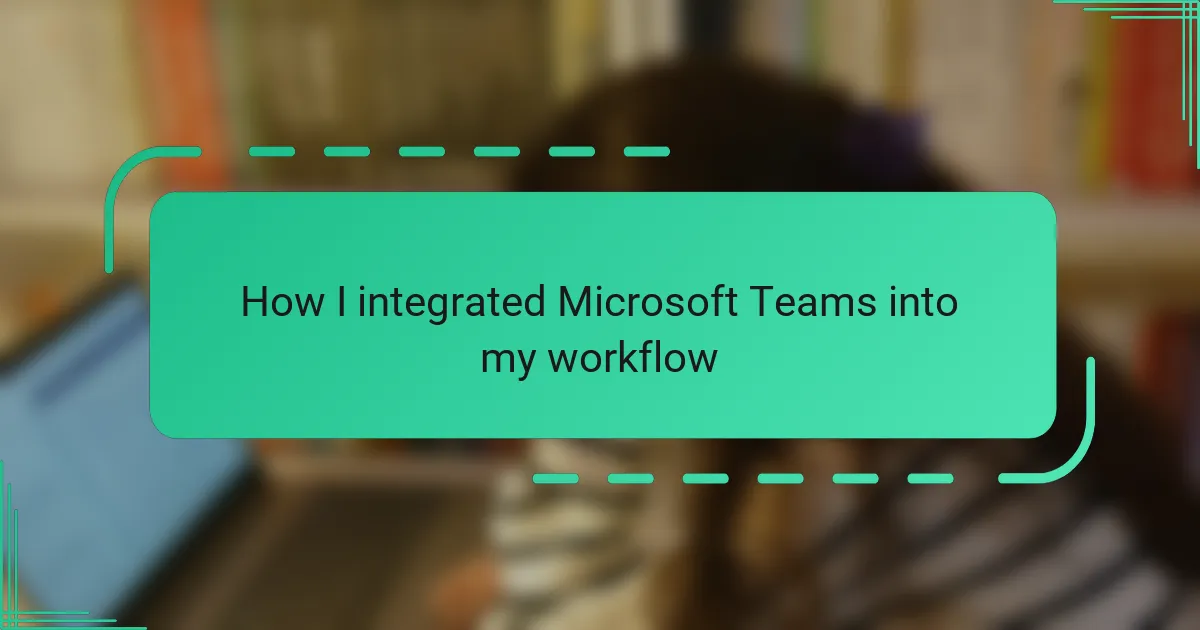Key takeaways
- Mint provides a comprehensive view of finances by linking bank accounts, credit cards, and bills, making spending habits clear and manageable.
- The app’s automatic expense categorization and real-time budget updates transform money management into a supportive and engaging experience.
- Customizable alerts and savings goals help users prioritize finances, turning overwhelming debt into achievable plans.
- Regularly analyzing Mint’s financial reports fosters proactive management and empowers users to make informed spending decisions.
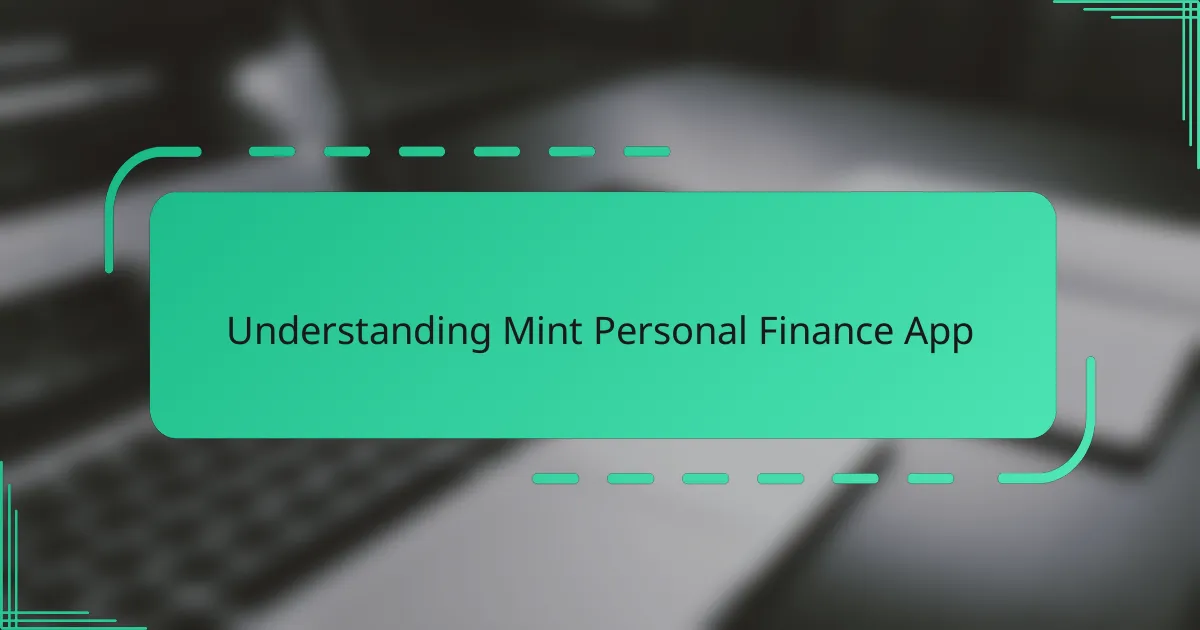
Understanding Mint Personal Finance App
When I first downloaded Mint, I was overwhelmed by the sheer amount of financial data it could handle. Connecting my bank accounts, credit cards, and bills all in one place revealed a clear picture of my spending habits—something I had never taken the time to see before. Have you ever wondered where your money disappears each month? Mint answered that question for me instantly.
What stood out to me was how Mint categorizes expenses automatically, saving me hours of manual tracking. It felt like having a personal financial advisor who gently nudges me to stay on budget without the pressure. This feature turned managing money from a chore into a simple, almost enjoyable routine.
The app’s ability to send timely reminders and alerts made me feel more in control and less anxious about upcoming bills or overspending. I found myself checking Mint regularly, not out of stress, but out of curiosity—curiosity about how my financial choices were shaping my future. It’s this insight that transformed my approach to money management.
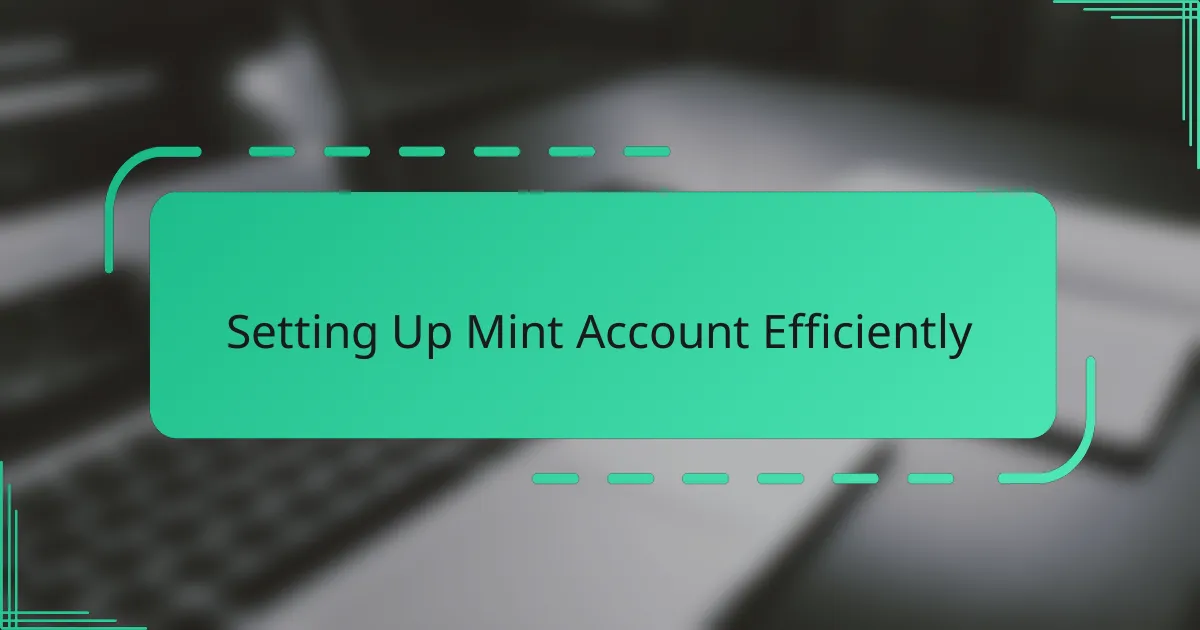
Setting Up Mint Account Efficiently
Starting to set up my Mint account, I focused on linking all my financial institutions carefully—banks, credit cards, and even investment accounts. At first, I hesitated to input sensitive details, but Mint’s security reassured me, and I realized that having everything in one place was worth the small step of trust. Have you ever felt that relief when all your scattered statements suddenly make sense together?
Next, I spent some time customizing the expense categories because I wanted the app to reflect my unique spending habits accurately. Mint does a great job categorizing automatically, but tweaking a few categories made the reports feel more personal and actionable. This small effort saved me from confusion down the line and helped me stay motivated to check my progress regularly.
Lastly, I set up notifications that matched my lifestyle instead of default alerts that could easily be ignored. Getting reminders that felt relevant without overwhelming me helped transform Mint from just another app to a helpful daily companion. It made me wonder—how many financial tools fail because they don’t adjust to our real-life rhythms? Mint feels different because it listens.
![]()
Tracking Expenses with Mint Tools
One of the most eye-opening features I discovered was Mint’s expense tracking tool. It automatically sorts every transaction into categories like groceries, entertainment, and utilities, so I didn’t have to do endless spreadsheet updates. Have you ever tried manually tracking expenses and felt it slip through the cracks? Mint took that frustration off my plate effortlessly.
What I appreciated most was how I could quickly spot patterns over weeks or months. For example, seeing how much I spent on dining out made me rethink my habits in a way that raw numbers on a bank statement never did. It wasn’t about cutting fun completely but being aware—that subtle awareness changed how I made choices daily.
Plus, Mint lets you set budgets for each category, and watching the app update in real-time after every purchase gave me a surprisingly satisfying sense of control. It’s like having a financial buddy keeping me honest but without judgment. Have you ever wished money management felt that supportive rather than stressful? That’s exactly what Mint accomplished for me.
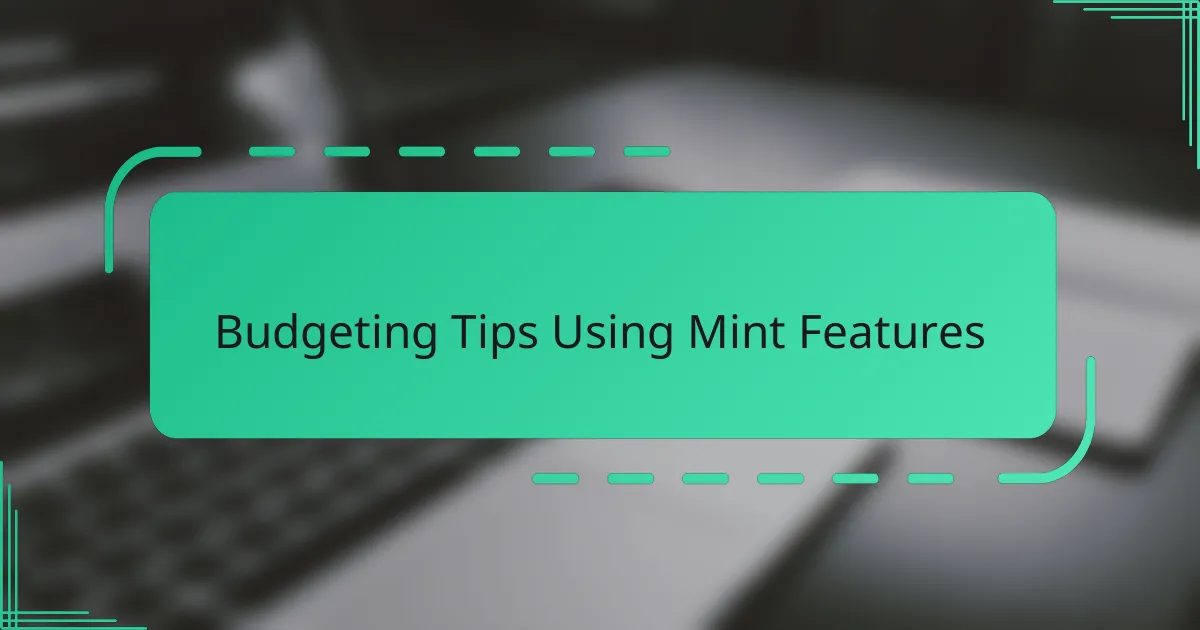
Budgeting Tips Using Mint Features
Mint’s budgeting features became my secret weapon for staying on track without feeling restricted. Setting budget limits for each category and receiving instant updates on my spending helped me catch overspending before it snowballed. Have you ever had that sinking feeling realizing you blew your budget too late? Mint’s real-time alerts stopped that from happening to me.
What really made a difference was customizing budgets based on my changing priorities. One month, I gave myself more wiggle room for entertainment after a busy stretch at work, then tightened it up when I wanted to save aggressively. Mint’s flexibility felt like it was adapting to my life, not the other way around—a feature I didn’t expect but quickly grew to rely on.
Lastly, the visual graphs Mint provides transformed abstract numbers into meaningful stories. Seeing a colorful breakdown of my spending habits made budgeting less of a task and more of an insightful game. It made me ask: How can I adjust this pie chart next month to reflect smarter choices? Having this clear view empowered me to plan with confidence.
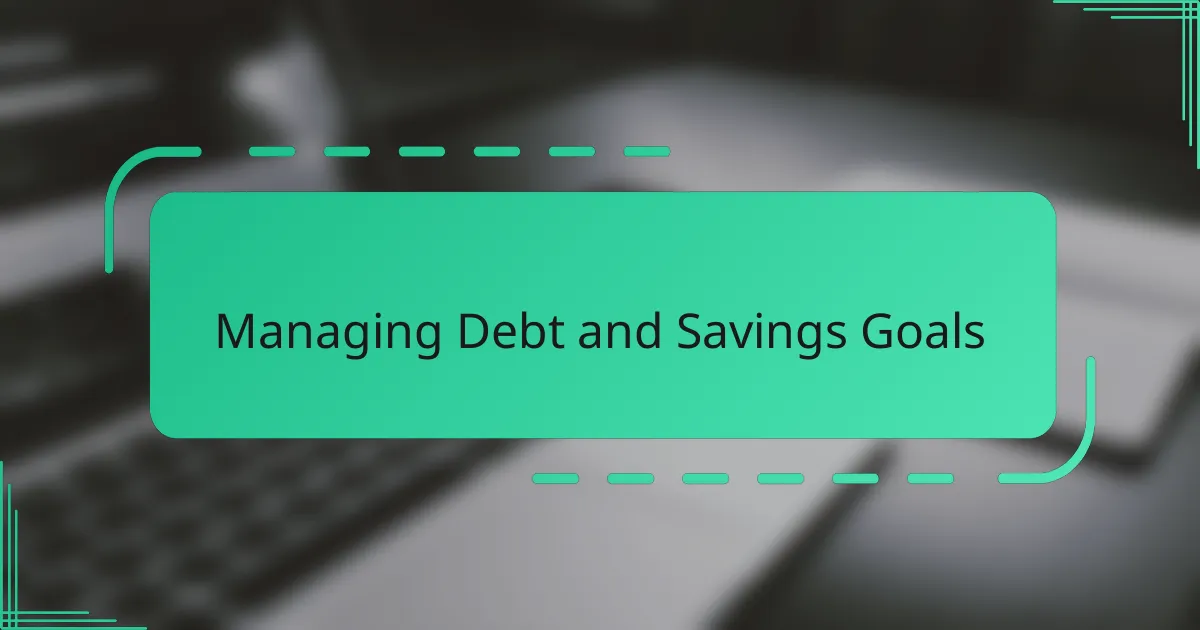
Managing Debt and Savings Goals
Managing debt with Mint became a game-changer for me. I could see all my outstanding balances in one place, which helped turn what felt like an overwhelming mountain of debt into manageable steps. Have you ever been unsure whether to pay off a credit card or save more? Mint’s tools helped me prioritize payments, reducing my stress and accelerating my progress.
Setting specific savings goals in Mint created a clear target that motivated me daily. Watching my progress bar inch closer to my emergency fund or vacation fund gave me a real sense of accomplishment. It made me realize that saving isn’t about depriving myself but about celebrating small wins along the way.
One thing I loved was Mint’s ability to alert me when I was veering off my debt payoff plan or not contributing enough to savings. These gentle nudges felt like having a financial coach who cared more about my success than just numbers. Have you ever wished for that kind of support? That’s exactly what Mint provided me.
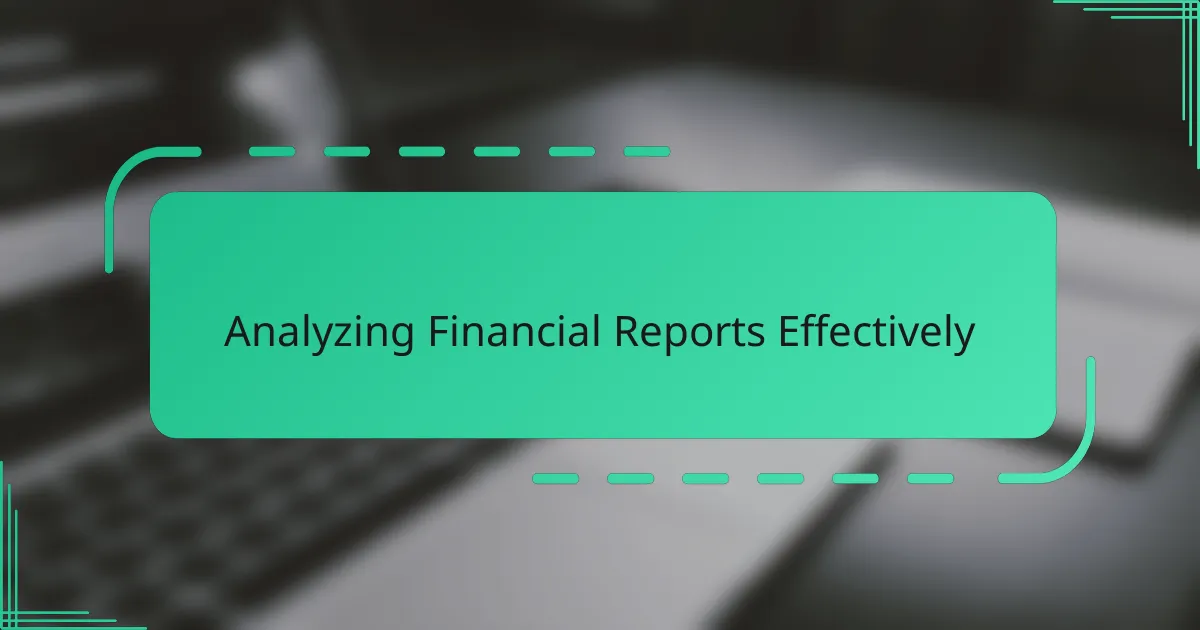
Analyzing Financial Reports Effectively
When I started analyzing Mint’s financial reports, I realized how crucial it was to look beyond the numbers and understand the story they told. Those colorful charts and detailed breakdowns weren’t just data—they revealed my spending patterns and even highlighted habits I hadn’t consciously noticed before. Have you ever seen a report and suddenly thought, “Oh, that’s where I’m leaking money”?
One thing I learned quickly was to use Mint’s filters to focus on specific timeframes or categories. This helped me compare monthly spending and spot trends like seasonal expenses or unexpected spikes. It felt empowering to dig deeper and see my financial behavior evolve over time. Isn’t it amazing how knowing exactly where your money goes can change the way you plan?
Lastly, I found that revisiting these reports regularly transformed analysis from being a daunting task into an intuitive habit. Instead of waiting until month-end statements piled up, I checked Mint weekly, which let me catch small issues early and celebrate small successes. This shift made financial tracking less about stress and more about active management—and that made all the difference for me.
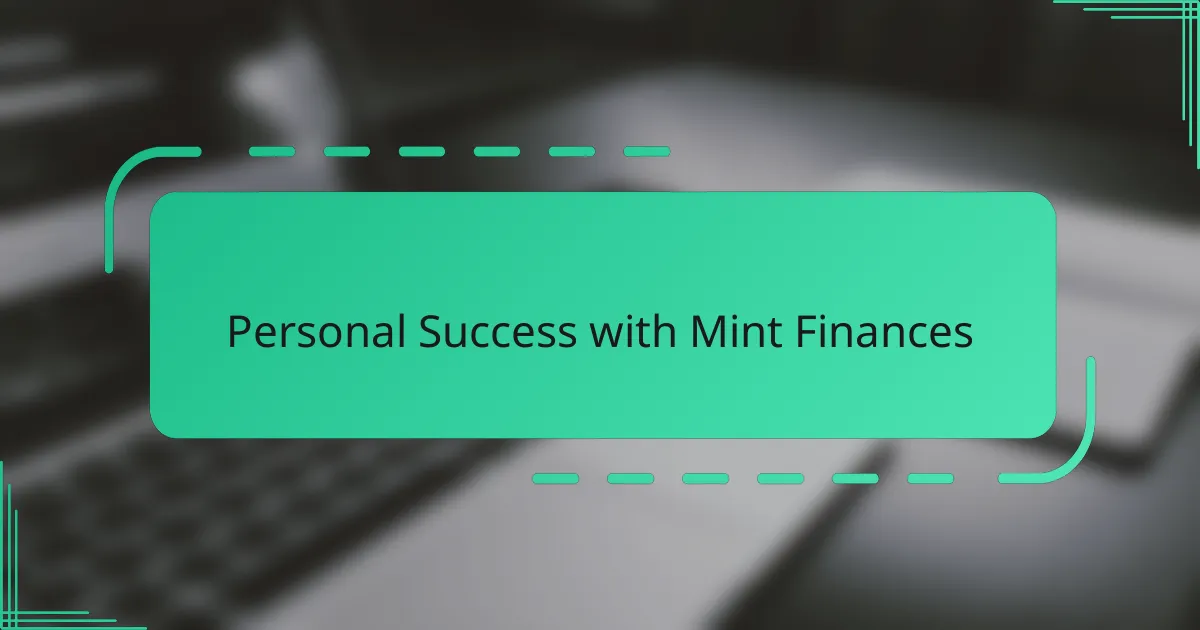
Personal Success with Mint Finances
Using Mint transformed my finances in ways I hadn’t imagined. For the first time, I genuinely felt in control rather than overwhelmed, and that sense of empowerment made budgeting feel less like a restriction and more like a smart choice.
I remember a moment when I saw my spending trends and realized I was consistently overspending on coffee. It was a small habit, but Mint’s clear insights nudged me to cut back, and those small changes quickly added up. Have you ever caught yourself in one of those “aha” moments that shift your entire mindset?
What really stuck with me was how Mint didn’t just show numbers—it told the story of my financial journey. Watching my savings grow and my debt shrink gave me motivation that spreadsheets never did. It made me ask myself, if managing money can feel this rewarding, why hadn’t I started sooner?
